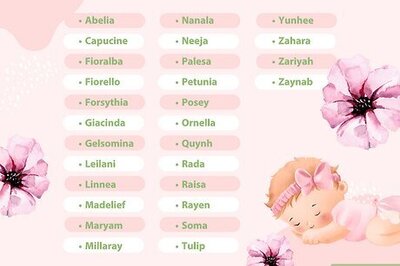
views
Bangaon (Kamrup): Fifty-eight-year-old Dulal Das has been reliving the horrors of his childhood when at the age of seven he along with his parents fled to Assam from Durgapur area of Mymensingh district of erstwhile East Pakistan in 1968 after communal riots broke out in the neighbouring country.
“Our houses were torched and we fled to India to save our lives. But even after living for over five decades of my life in this country, the fear of becoming ‘stateless’ is once again haunting me as the National Register of Citizens (NRC) final list may not have my and my family members’ names," said a worrying Das.
Not only Das, but fears of exclusion from the final NRC has gripped around 274 odd Hindu refugee families from the erstwhile East Pakistan, settled at Choudhurypara in Bangaon in Kamrup district, around 60 km from the capital city of Guwahati, by the then Assam government. Victims of religious persecution, these people were settled in several corners of the state between 1964-1968, much before 1971, the prescribed cut-off year for detection and deportation of illegal migrants from Assam.
“The draft NRC released last year, did not contain my name. It did not even have the names of my wife Mamata and son Rajesh Das. After the draft NRC did not figure our names, we claimed our citizenship and submitted the refugee certificate. The documents issued by the government allows our settlements. We also obtained land documents through which we were even allotted small chunks of lands and got the electoral rolls documents during a hearing two months back. But we are still unsure, whether our names will find a mention this time or not. Will we become stateless again?" lamented Das.
Mostly belonging to Koch-Rajbongshi, Hajong and Garo communities, this bunch of Hindu refugee families continued to make a beeline to the local NRC Seva Kendra over last one year with the pieces of papers — faded and brittle — proving their family’s refugee status.
The refugee certificates issued by the then ministry of rehabilitation read that these families arrived in the Indian border due to religious persecution, without any identity documents, from 1964-68. After living as inmates in an adjoining refugee camp (Bamunigaon Permanent Liability Home) for a couple of years, the government later began allotting small pieces of land to each of the families and now, over half a century and at least two generations later, the families don’t consider themselves as an outsider.
“Though the government records distinctively said that all these families now settled here were migrated from East Pakistan for religious persecution before 1971, my name and names of other families are missing from the draft NRC," added 45-year-old Sushil Das, who was even born in the relief camp of Bamunigaon.
He added that the NRC updation process has turned out to be nothing but a double-edged sword. “The question of our identity has become the biggest nightmare now. My father migrated from erstwhile East Pakistan with my mother and two sisters in 1964. I was born and brought up here with the local kids. Our family received land allotments in the late 80s too. But if our names are stripped off from the NRC list now, we are unsure about our future. Most of the people are not even capable of fighting a lengthy and costly legal battle," Sushil said. The state social welfare department had facilitated the process of giving land allotment to these refugee families who came to India then.
But it’s not only these Hindu refugee families who have been living under the trauma in the district. Around five thousand people living in Malibari Pathar, some 23 km away from the Bangaon in Kamrup, have been too spending sleepless nights. Though figured in last year’s NRC draft list, these families have been worried after at least one member from most of the families were called for re-verification of their NRC documents with short notices early this month.
Sirajul Ali, a local trader, said, “Almost all the villagers are worried ever since the summons were issued for attending re-verification from early this month. Unlike many others, members of minority community inhabited the villages. Most of our people made the cut in both the initial and final drafts published by the NRC authority. But, the latest summons have triggered a sense of insecurity again. All eyes are fixed on August 31 when the fate of our future will be decided with the release of the NRC." Though all the members of Ali’s family were figured in NRC draft, his brother Moinul was asked to appear before the NRC authority a few days back for re-verification.
Already, the possibility of an erroneous NRC has forced the government to prepare a roadmap for the NRC aftermath. The Centre has already clarified that the final NRC would not be closure for those who will be left out of it. Those left out of the final NRC will have to take the tribunal route. From increasing the window period from 60 days to 120 days for appealing for citizenship before the Foreigners’ Tribunals (FTs), the government has also been readying some 200 additional FTs to address the crisis. Already 100 FTs exist. Even if a tribunal declares one as a foreigner, he or she will still have the option of praying before higher courts for relief.
As per the Supreme Court directive, the office of the Registrar General of India will publish the final NRC on August 31. The final draft, released in July 2018, had left out 40 lakh applicants, of whom nearly 31 lakh reapplied.




















Comments
0 comment